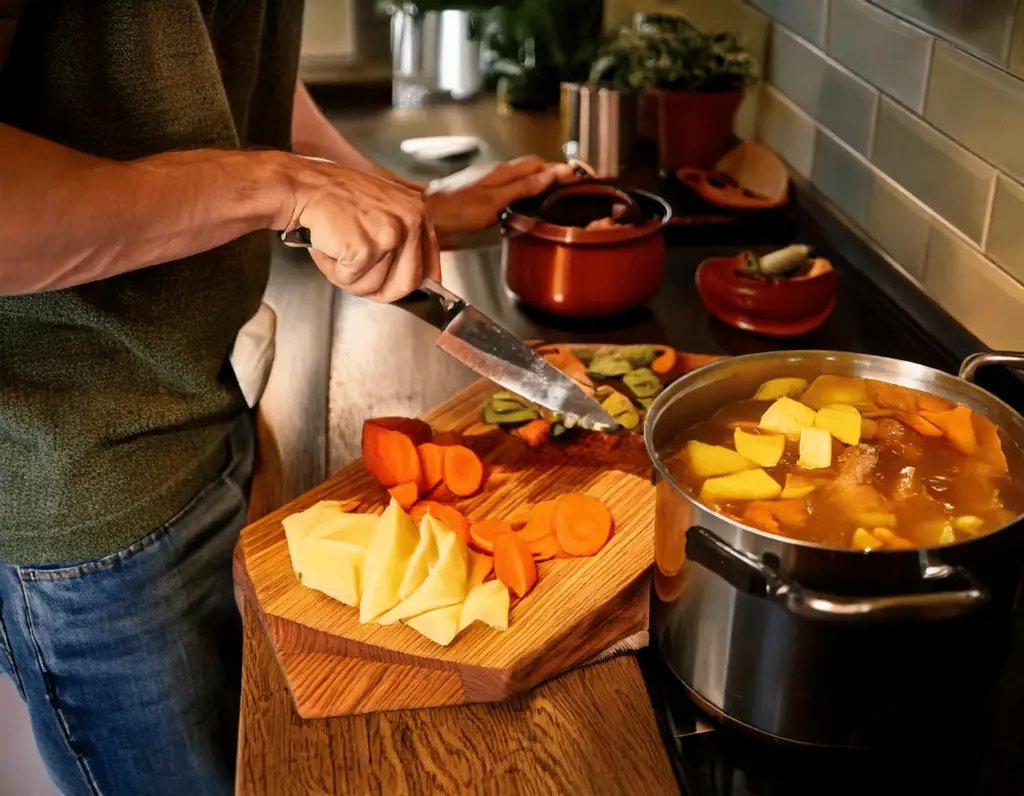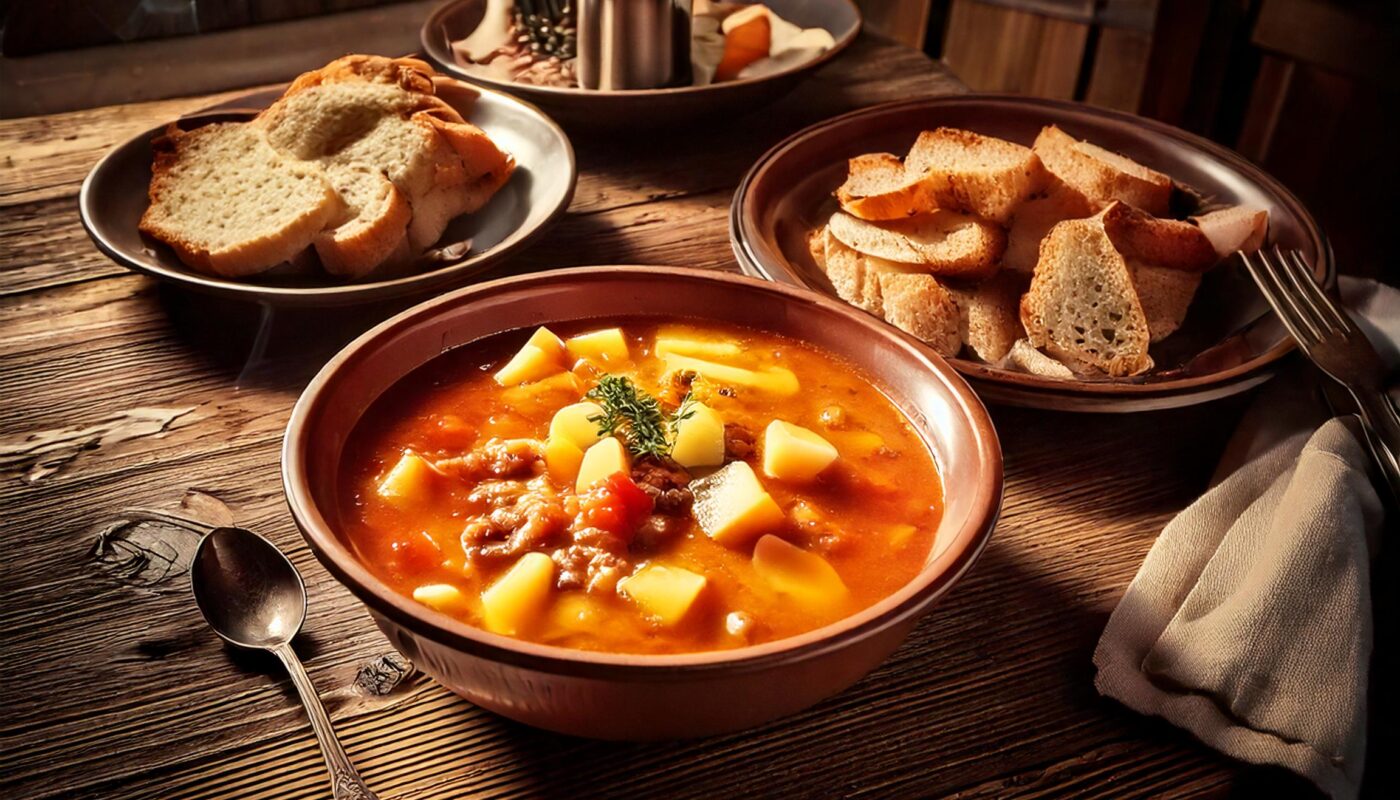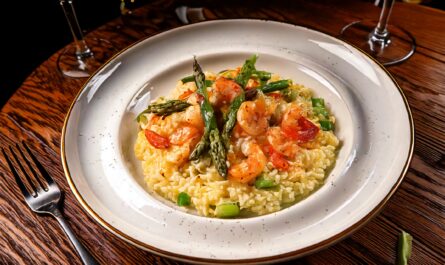This classic Southern dish takes you back to the roots of community cooking, blending tradition, flavor, and history in every spoonful.
This recipe was taken from a 1904 cookbook entitled “The Ann Arbor Cookbook, comp. by the Ladies Aid Society of the Congregational Church.” It offers a historical glimpse of popular foods at the turn of the last century. We have updated the recipe to utilize ingredients you can find today at our favorite grocery store.
From Squirrel to Chicken: The Evolution of Brunswick Stew
Picture this: a bubbling pot over an open fire, families gathered with bowls in hand, waiting to enjoy a dish as rich in history as it is in flavor. Brunswick Stew, a cherished Southern staple, began its journey as a humble meal meant to feed the masses. With origins tied to both Brunswick County, Virginia, and Brunswick, Georgia, this hearty concoction has sparked friendly rivalries over its true birthplace.
In 1904, Brunswick Stew was a symbol of practical ingenuity—a way to transform available ingredients, often game meats like squirrel or rabbit, into something extraordinary. By this time, chicken had become the star protein, bringing a new accessibility to the dish while preserving its rustic charm. The smoky addition of bacon or ham, fresh Lima beans, and sweet corn elevated the flavor, making it a dish of comfort and connection.
A Recipe That Stands the Test of Time (And Taste Buds)

Modern interpretations of Brunswick Stew remain faithful to its heritage while embracing convenience. A standout 1904 recipe highlights simplicity, with chicken, vegetables, and pork melding together through slow cooking. While the original recipe omits exact measurements, today’s cooks have fine-tuned it for perfect results.
Here’s an updated version that captures the essence of the classic while adding a modern twist:
Ingredients:
- 4 pounds of chicken (skinless thighs and drumsticks preferred)
- 1 small onion, finely diced
- 6 slices of smoked bacon, chopped
- 6 cups chicken broth
- 2 cups fresh or frozen Lima beans
- 2 cups fresh or frozen corn kernels
- 1 tablespoon fresh parsley, chopped
- 1 teaspoon salt (to taste)
- ½ teaspoon black pepper
- Optional: 1 can (14 oz) diced tomatoes for extra flavor
Instructions:
- Build the Flavor Base: Begin by rendering bacon in a heavy-bottomed pot. Remove the crispy bits and save them for later, leaving the flavorful fat to sauté onions.
- Layer the Flavors: Brown the chicken in the pot before deglazing with chicken broth. Add in your seasonings and bring the mixture to a simmer.
- Low and Slow: Allow the stew to cook gently, giving the ingredients time to meld. Add vegetables in the final stages to preserve their texture and sweetness.
- Finishing Touches: Shred the tender chicken back into the pot, sprinkle with parsley, and adjust seasoning to taste.
This stew is best served with warm, crusty bread or classic cornbread, offering a perfect complement to its rich, smoky broth.
What Makes Brunswick Stew a Culinary Icon?

At its core, Brunswick Stew tells a story of resilience and resourcefulness. In its early days, it was a communal effort, a way to stretch scarce resources and bring people together. The pot was often filled with whatever could be sourced locally, making every batch unique.
Virginia’s version leans towards a smoother texture, often featuring squirrel or rabbit, while Georgia’s take is heartier and tomato-forward. Over time, these regional variations have blended, creating a dish that reflects the diversity and adaptability of Southern cuisine.
The modern recipe reflects our collective preference for familiar proteins and a balance of fresh, seasonal vegetables. Yet, the heart of the stew—a symbol of hospitality and shared meals—remains unchanged.
The Historical Backbone of Brunswick Stew
The 1904 recipe reveals much about Southern cooking at the time. By then, the dish had moved beyond the frontier and into the homes and church socials of rural America. The inclusion of bacon or ham was a nod to the resourcefulness of Southern cooks, who used these ingredients to enrich dishes.
Seasonal vegetables like Lima beans and corn brought brightness and sweetness, while chicken provided a more affordable and accessible option for families. This combination ensured Brunswick Stew’s place not just as a meal, but as a tradition.
Why Brunswick Stew Matters Today
Brunswick Stew remains more than just a recipe—it’s a cultural artifact, a connection to the past served in a bowl. In a world where fast food and fusion dominate, this dish reminds us of the beauty in simplicity and the value of slow cooking. Each ingredient carries a piece of history, and each simmering pot revives a tradition of gathering, sharing, and savoring.
Your Turn – Think This is Yummy? Or Hate It? We Want to Hear From You
Please offer an insightful and thoughtful comment. Idiotic, profane, or threatening comments are eliminated without remorse. Consider sharing this story. Follow us to have other feature stories fill up your Newsbreak feed from ThumbWind Publications.
Check Out Our Other Popular Culinary Features
5 Best Cuban Sandwich Tampa – Flavorful Trek Of Rich History
Embark on a delicious journey through Tampa’s top Cuban sandwich spots and their rich cultural roots.
Is A.1. Buttering Us Up? New Product Dips Into Steakhouse Game
Discover the bold new flavors of A.1.’s latest creation and how it’s shaking up the steakhouse experience for home cooks.
The Secret Behind Red Hot Dogs – Fascinating Story of Why They’re Red
Dive into the colorful tale of these iconic hot dogs, exploring the history, science, and culture behind their vibrant hue.




